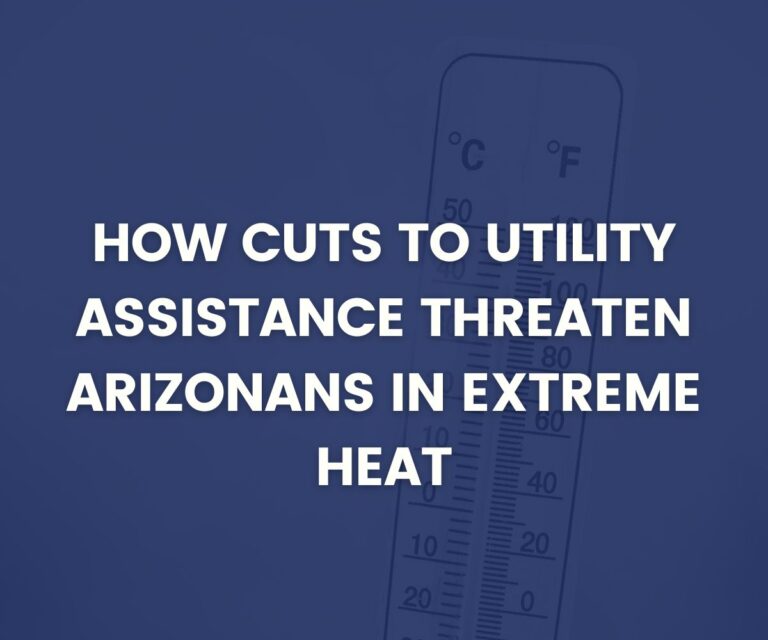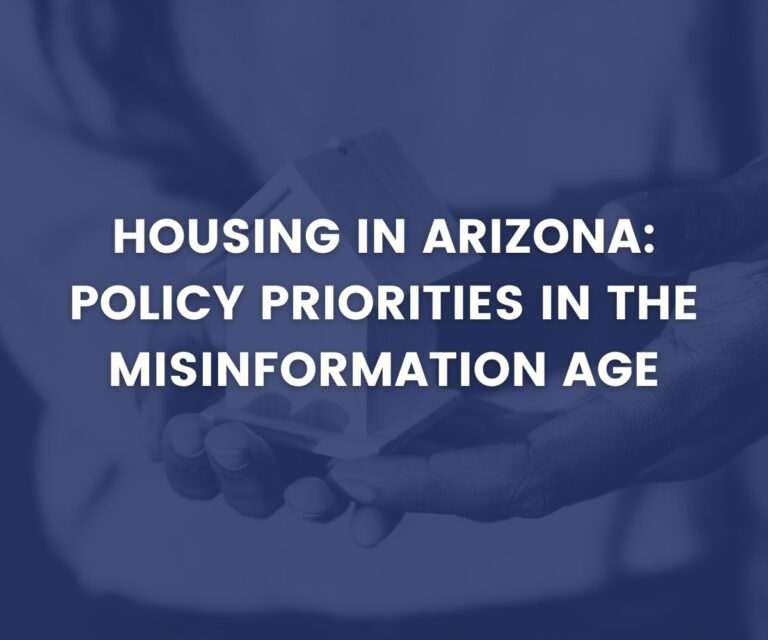
Arizona Legislature Introduces a “Skinny” Budget to Avoid Working for Consensus. The Governor Proposes a Full Budget that Meets Many of the Needs of Arizonans
On January 9, Governor Hobbs released her budget proposal to address the needs of Arizonans. This week, the legislature ignored the Governor’s proposal and introduced bills to adopt a “skinny” budget. These bills are being fast-tracked through the legislature. During the Senate Appropriations Committee, it was made clear that the “skinny” budget was introduced to allow state government to continue to provide services after July 1 even if a “full” budget had not been passed. While this appears to be rational, the July 1 deadline has often provided pressure on the legislature to come to consensus on budget issues.
The ”skinny” budget is basically the current year’s budget with adjustments. One-time spending has been removed. The ”skinny” budget also includes adjustments for those budget items that are statutorily required or have federal match rates. These include adjustments for the number and statutorily driven costs for public school students, adjustments for the number cost, and federal match rates within the AHCCCS program and the Department of Economic Security’s Division for Developmental Disabilities. It also includes increases required from the Department of Corrections’ contracts with private prisons.
The current ”skinny” budget proposal includes a few increases outside these “baseline” changes. $183 million is being added for school building renewal grants, bringing the total to $200 million. The Department of Corrections’ contracts for private prisons are being increased $7 million for salary increases. Funding that had been designated as one-time for the Homeless Pregnant Women Services budget line in the Department of Health Services is being continued.
The Governor’s budget goes far beyond the baseline changes included in the “skinny” budget – it funds issues to improve the lives and circumstances of Arizonans. Here are some of the items funded in Governor Hobbs’ proposed budget that are missing from the “skinny” budget. Children’s Action Alliance and the Arizona Center for Economic Progress see these issues as being important investments in Arizona’s future.
- KidsCare Expansion. Children with health insurance are healthier, more likely to graduate from high school, earn higher wages as adults, and are more likely to bear healthy children themselves. Investing in health insurance for children is a proven way to reduce both health and economic disparities for generations to come. Arizona KidsCare currently provides health care coverage for children in working families, with incomes up to 200% of the federal poverty level. The Governor’s budget increases the income limit to 300%, covering an additional 38,700 children.
- Educator Retention Taskforce. Children’s school performance depends on a variety of factors, one of which is having trained and experienced teachers. The Governor’s budget creates a taskforce to examine the issues and solutions surrounding educator retention.
- Dual Enrollment. Taking college-level classes while still in high school improves the chances that students will continue with their post-high school education. The budget provides $20.5 million to help pay the cost of high school students taking college level classes. The state would pay $50 per credit hour for 6 hours for freshmen and sophomores and 12 hours for juniors and seniors.
- Arizona Promise Programs. Arizona’s Promise Program pays the tuition for first-time enrollees to attend one of the state’s public universities. The Governor’s budget adds $40 million to the existing Arizona Promise Program for a total of $60 million plus creates the Promise for Dreamers Program with $40 million.
- University New Economic Initiatives. The budget provides $31 million for programs at the three universities to educate students in high-demand subjects such as engineering, behavioral health, health, mining, space and defense.
- District and Charter Additional Assistance Funding. The Governor adopts a different method for determining the funding for district and charter additional assistance, funding that pays for items such as textbooks, computers, and other classroom needs.
- Broadband Infusion. Reliable access to high-speed internet is essential for all Arizonans. The Governor’s budget provides funding to increase broadband availability throughout the state -$50 million for the Commerce Authority; $5 million in the Department of Education, $16 million to provide broadband a state facilities, and a yet-to-be-determined amount for state parks.
- School Facilities. Recognizing the need for new schools in some areas of the state and school repairs across the state, the Governor’s budget provides $332 million for building renewal and $141 million for new school building in addition to $32 million for new schools already being built. The budget also allots $1 million to provide on-site inspections of schools.
- Biennial Visits for Long Term Care Ombudsman. The number of elderly and fragile adults in Arizona continues to grow. The Governor’s Budget assures that the long-term care ombudsmen visit each long-term care facility at least twice a year.
- Maintaining and Improving Our Parks. The Governor’s budget provides $29 million for four of the state’s parks – Catalina, Riordan Mansion, Oracle and Yuma Territorial Prison – plus funding to improve campgrounds, provide sunshade structure, and assure water conservation throughout the state.
- Border Safety. The Governor’s budget repurposes the Border Strike Force’s $17 million to provide grants to law enforcement in border communities.
- Eliminating Unnecessary Spending. The Governor has identified several areas where state investments are not needed. This includes the Commercial Vehicle Enforcement Task Force in the Department of Public Safety, a cost saving of $1 million.
- Water. The adequacy and quality of Arizona’s water resources continues to be a primary concern. The Governor’s budget provides $5 million for water resource planning, $15 million for a grant program for rural Arizonans, Latino and Indigenous communities, and $5 million to treat Arizona water for PFAS.
- Positions. Despite prior increases, some state positions continue to be difficult to fill. The Governor’s budget includes pay increases for staff in the Attorney General’s Office; Department of Child Safety staff; all nursing positions in state agencies; court probation officers; and Department of Transportation staff.
- Pay Raises for Difficult-to-Fill Positions. Despite prior increases, some state positions continue to be difficult to fill. The Governor’s budget includes pay increases for staff in the Attorney General’s Office; Department of Child Safety staff; all nursing positions in state agencies; court probation officers; and Department of Transportation staff.
- Fund Deposits. The Governor’s budget takes advantage of the state’s large balance in one-time funds to make several fund deposits. To cushion the impact if state revenues all, the largest deposit is $250 million to the Rainy Day Fund, bringing the balance to an historic $1.75 billion. $150 million is proposed for the Housing Trust Fund, adding to the $60 million that was deposited last year. $20 million is proposed for the Arts Fund; $50 million for the SMART fund for rural transportation; $10 million for the Parks Department’s Heritage Fund; and $1.3 million for the Governor’s Emergency Fund.
We disagree with the Governor’s proposal to adopt two transaction privilege tax (sales tax) exemptions for diapers and feminine hygiene products. These exemptions would not only reduce state revenues, they would also adversely affect local governments, especially rural towns that depend on sales taxes for basic government services. Read more about our position on these tax exemptions here and here.
What’s Next
The “skinny” budget has already passed out of the State Senate and the State House Appropriations Committee and headed to the floor soon. We want to encourage you to act by:
- Signing on to the Arizona Request to Speak to oppose the following bills: HB2570-HB2582
- Share this information via social media and your networks, and:
- Follow Children’s Action Alliance and the Arizona Center for Economic Progress for more news as the 56th Legislature First Regular Session continues.



